Unless distant family was involved in the US Civil War there is almost nothing to connect an Australian with a war that threatened to rip a nation apart, eventually welded it, and which still resonates more than 140 years later as something sentimental and patriotic. And divisive -flint eyed southerners will tell you they are going to “do it again”.
As it turns out I have distant family connections that were involved in both the War of Revolution and the US Civil War. The first time I visited a US Civil War site it was in 1989 and I had no awareness of those connections. However I had the good fortune to discover in the Wheatfield a connection woven of common humanity, and I was fused to that place by bonds that have everything to do with the blasphemy of spilt blood and the gnashing of emotion as you realise you stand where brother slaughtered brother. Stand in the middle of the Wheatfield and be the only person there, in quiet, stunning lark punctuated silence, knee deep in grass, turn slowly and see how small the field is as the woods close in on you. And ponder the thousands who perished here in three short days. I connected with America in, of all places, the Wheatfield.
Years later I discovered the remarkable story of Colonel Joshua Chamberlain who, on revisiting the battlefield in 1889 said…"In great deeds something abides. On great fields something stays. Forms change and pass; bodies disappear; but spirits linger, to consecrate ground for the vision-place of souls. And reverent men and women from afar, and generations that know us not and that we know not of, heart-drawn to see where and by whom great things were suffered and done for them, shall come to this deathless field, to ponder and dream, and lo! The shadow of a mighty presence shall wrap them in its bosom, and the power of the vision pass into their souls."
Poetic language which says more powerfully something that touched me as I looked around that wheatfield. And since 1988 there are any number of stories about that battlefield I have gathered in my head. But one sticks out above all others. It is the story of an old man and the common spirit and vision we shared with him. It is my habit when visiting the Gettysburg battlefield, to park my car and then walk every inch of ground I can. Only in climbing or descending Little and Big Roundtop can you appreciate what tough ground it was to fight through. Lie in the Devils Den and understand the advantages and disadvantages of your lair – and just how close you are to sharp eyed soldiers across Plum Run. Or closer. How men came to be trapped there and die with no one knowing. And walk Pickets Charge and comprehend the despair and futility and hopelessness and unexplainable courage of the men who pushed the Union Line. It only takes twenty minutes to walk from Lee’s statue which marks part of the Confederate jumping-off point to the top of Cemetery Ridge, their objective. Stand there and marvel that anyone got that far in the face of canon fire and musketry. A steady walk across open ground into steady fire.
In 1997 I was walking Pickett’s Charge. It was September. Still hot but not with the high humidity that July can bring. I was walking with a friend from Slovenia, Andre, who knew the site well and who had been touched in some place by what this battlefield represented. Being from the Balkans he knew only too well what brother fighting brother was really all about. Chamberlain would no doubt be amazed that his battlefield would connect with two foreigners from opposite ends of the earth. We were of a generation he knew not, from afar, but most reverent.
As we climbed the shallow incline we were distracted by the struggling figure of an old man who was clearly making a hard job of the heat and the uneven ground, and we hastened forward to catch up with him. On reaching him we offered him assistance but he gruffly rebuffed us. So we offered him some water instead which he gladly accepted. As we spoke he realised from our accents we were not locals and so asked us from where we hailed. When he discovered we were from Australia and Slovenia he was overcome with emotion and for a moment Andre and I thought we had a heart attack victim on our hands.
As the old fellow straightened up (continuing to rebuff our offers of assistance) and wiped his eyes he told us he was 86 years old. That his grandfather had somehow survived Pickett’s Charge in July 1863. And that every year on the anniversary of his grandfather’s death he walked Pickett’s Charge. Had done so every year since before he could remember - he had been carried there as a baby by his grandfather who walked up there once a year to remember fellows ground into eternity by Union guns. And in the mind of this old fellow the best way to honour the memory of his grandfather was to walk this field alone, all the way to the low stone wall along the front of the copse where Meade has blasted Confederates all day at point blank range until many of his own men wept at the carnage and refused to continue the slaughter. This old gent had it in his head that he had to walk this walk on his own, to reach the High Water Mark of the Confederacy (that stone wall) unaided. Regardless of health. Of weather. Above the protests of his family – he pointed out a car parked near the copse. Said his daughter was waiting up there with a first aid kit and oxygen tank “just in case”.
We asked him if we could walk with him and he was clearly moved. He was amazed to discover two foreigners who were familiar with the battle, familiar with the place it has in American (and world) history, but more importantly, who had discovered some other less concrete but no less tangible connection with this bloody ground. So we walked in a slow shuffle, probably no faster than the shattered bodies were able in the face of all the leaded fire, and under the rain of steel shot one hundred and thirty four years earlier. This day there was no noise or smoke or shouts or battlefield moan of expiring or striving men. Just the three of us. One American. One Slovenian. One Australian. All men. Silent in our shared humanity and companionship.
As the old gold Mercury slid slowly and silently over the ridge and out of sight towards the town of Gettysburg with our new old friend, it occurred to me that we had not asked about those in his family who might continue this tradition of remembrance. To have the power of the vision pass into their souls. As we looked at each other we knew we had not needed to ask. Without any words he had declared there were none.


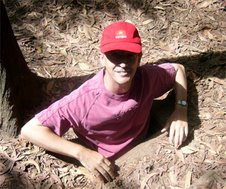


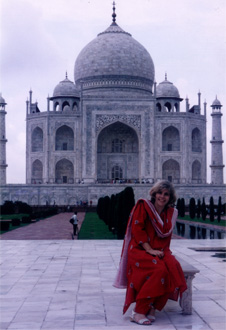





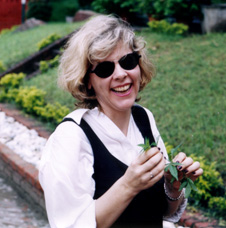
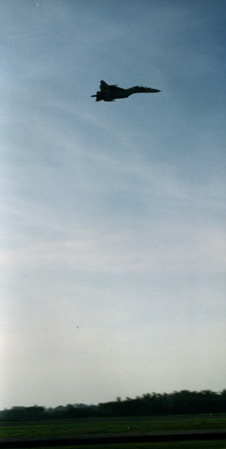
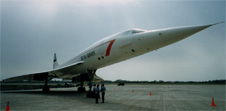


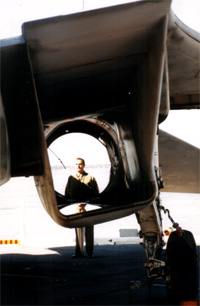



1 comment:
Truly inspiring. Thanks for your notes. By reading your words I almost felt the wind and saw the tree you were walking towards.
ecoli.
Post a Comment